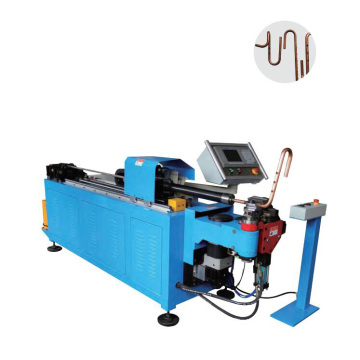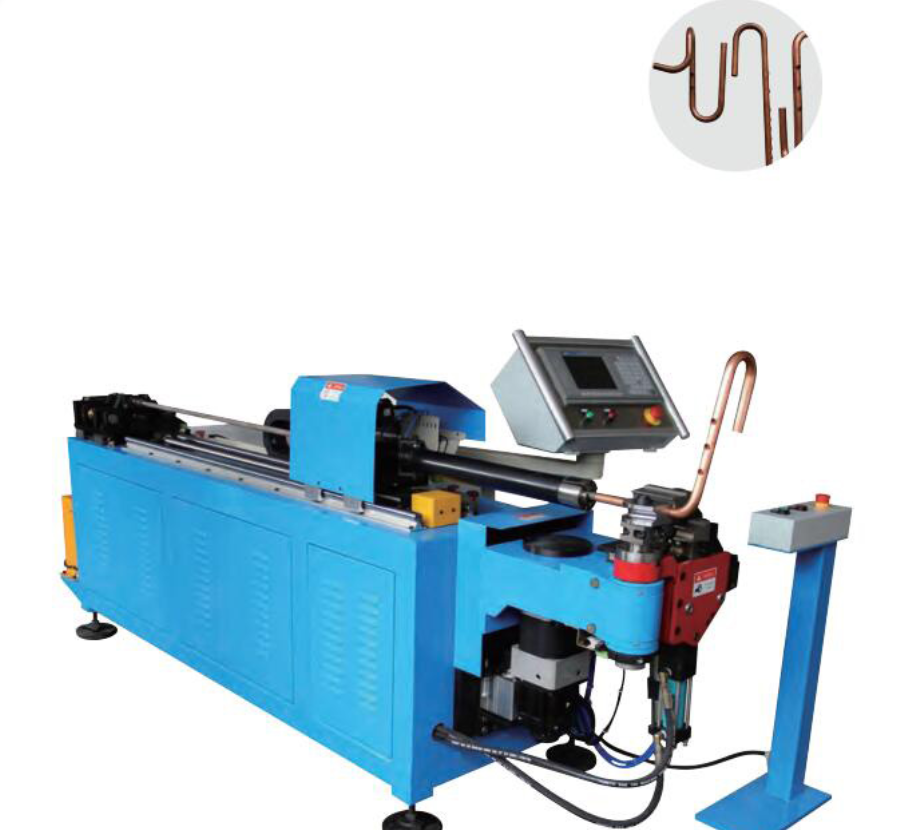
CNC Hole Punching And 3D Bending Machine
(Total 1 Products)-
Brand:XinchangMin. Order:1Place of Origin:Ningbo,ChinaCNC Metal Hole Punching & 3D Bending Machine: The all-rounder of metal processingIn the field of metal processing, efficient, precise and multi-functional equipment has always been the goal pursued by the industry. The CNC Metal Hole Punching...
A CNC Hole Punching And 3D Bending Machine is an advanced automated device that combines precision hole punching and multi-axis 3D bending for sheet metal (steel, aluminum, copper) in one workflow. It eliminates the need for separate machines, processing flat sheets into complex 3D parts with punched holes (for connections) and curved shapes—critical for automotive, aerospace, and appliance industries needing efficient, high-quality production.
Core Working Principle & Key Components
Sheet Handling: Motorized conveyors feed sheets (thickness: 0.5mm–8mm, size up to 2m×3m) into the machine. CNC linear guides (±0.02mm accuracy) position the sheet using laser alignment.
Hole Punching Unit: A tool turret with 8–25 interchangeable dies (hole diameter: 1mm–40mm) punches clean holes. A hydraulic ram (force: 5–45kN) adjusts based on material thickness to avoid burrs.
3D Bending Unit: Features 3–5 programmable axes (X/Y/Z + rotational) to bend sheets into 3D shapes (e.g., U-bends, complex curves). Adjustable clamping jaws secure the sheet; a bending ram (angle tolerance: ±0.1°) forms shapes without deformation.
CNC Control: Touchscreen panel imports CAD files, stores 80+ programs, and syncs punching/bending steps—ensuring hole positions align with bent shapes (critical for assembly).
Key Advantages
Integrated Efficiency: Cuts processing time by 35–55% vs. separate machines. A part needing 20 holes + 3D bends takes 8–12 minutes vs. 25+ minutes with manual workflows.
Precision Sync: CNC coordination ensures holes align with 3D bends (±0.03mm spacing), avoiding assembly errors (e.g., misaligned fasteners in automotive parts).
Versatility: Adapts to materials (mild steel, aluminum) and part sizes—from small appliance brackets to large aerospace panels. Interchangeable tools handle diverse hole sizes and bend angles (90°–180°).
Cost Savings: Reduces material scrap (to <2%) via precise control; eliminates labor for machine switching.
Integrated Efficiency: Cuts processing time by 35–55% vs. separate machines. A part needing 20 holes + 3D bends takes 8–12 minutes vs. 25+ minutes with manual workflows.
Precision Sync: CNC coordination ensures holes align with 3D bends (±0.03mm spacing), avoiding assembly errors (e.g., misaligned fasteners in automotive parts).
Versatility: Adapts to materials (mild steel, aluminum) and part sizes—from small appliance brackets to large aerospace panels. Interchangeable tools handle diverse hole sizes and bend angles (90°–180°).
Cost Savings: Reduces material scrap (to <2%) via precise control; eliminates labor for machine switching.
Typical Applications
Automotive: Makes steel/aluminum chassis parts (with punched holes for bolts) and 3D-bent door frames—ensuring structural stability.
Aerospace: Processes thin aluminum sheets (1mm–3mm) into 3D interior panels with punched rivet holes, meeting strict weight standards.
Appliance: Creates stainless steel washer/dryer parts—punched holes for pipes, 3D bends for casing edges.
Electronics: Produces 3D-bent copper heat sinks with punched mounting holes, optimizing heat dissipation.
Operational & Safety Tips
Tool Check: Inspect punch dies and bending jaws daily; replace worn tools after 800+ cycles.
Program Test: Simulate CAD programs first to verify hole/bend positions.
Safety: Use safety curtains and emergency stops; operators wear gloves/ goggles to avoid shavings.
In short, this machine merges punching and 3D bending for complex sheet metal parts, boosting efficiency and precision—essential for industries needing high-performance, integrated manufacturing.

CNC Hole Punching and 3D Bending Machine
CNC hole punching and 3D bending machines are advanced industrial systems that combine two critical metalworking processes—hole punching and three - dimensional bending—into a single, automated workflow. These machines leverage computer numerical control (CNC) technology to transform flat metal sheets or profiles into complex, fully formed components with precise holes and intricate bends.
